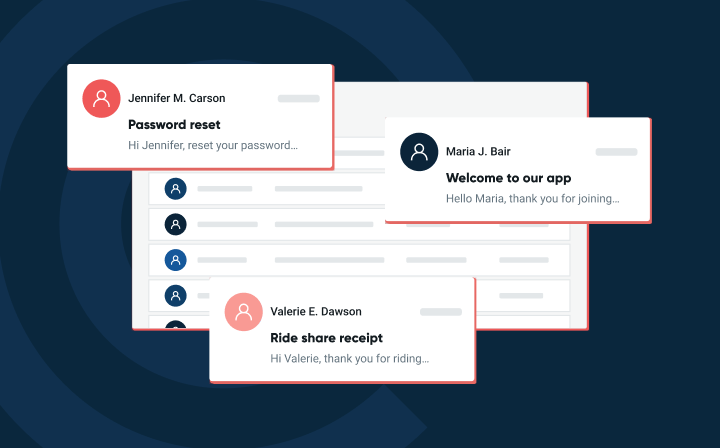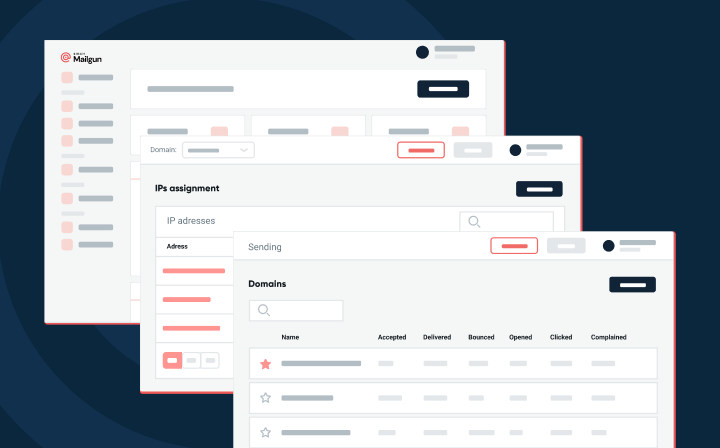Why accessibility in email isn’t optional anymore
Get the latest recap of Email’s Not Dead! This time, we’re diving deep into what accessibility really means for email, what senders need to consider in 2025, and how brands can stop leaving money and people behind.
PUBLISHED ON
Accessibility matters, not just because of legal requirements like the upcoming EAA (don’t worry, we’ll explain), but because it's the right thing to do. We’re recapping our latest episode of Emails Not Dead, the crew welcomes back Megan Boshuyzen, Senior Email Developer at Sinch Mailgun and Mailjet, for her third appearance.
Table of contents
It’s not just about compliance. It’s about communication.
Accessibility in email isn't a "nice-to-have." It's a foundational principle for reaching your full audience.
"Accessible emails are legible, readable, actionable to as many people as possible, regardless of their ability."
Sr. Email Developer at Sinch Mailgun and Mailjet
From poor mobile reception to low vision to full blindness, the reality is clear: if you're not designing with accessibility in mind, you're excluding people. And those people are already part of your audience.
Globally, 1.3 billion people live with some form of disability, according to the World Health Organization. Of those, an estimated 736 million are email users. Screen reader users alone represent a potential $59 million in lost revenue if brands fail to support them with accessible design. That’s a huge opportunity missed.
The law is catching up: What the EAA means for B2C brands
The European Accessibility Act (EAA) goes into effect in June 2025, setting a new bar for digital inclusion. While B2B businesses are currently exempt, any B2C brand selling directly to EU consumers must comply. That includes email.
So, what does that mean for senders?
If you're using full-image emails, you need to rethink that strategy or add thoughtful, meaningful alt text. You should be following the Web Content Accessibility Guidelines (WCAG) as a baseline. And yes, even if your company is based outside the EU, these standards will apply to your emails if you're reaching anyone inside it.
“If you're already following best practices—like using live text, ensuring strong contrast, and designing with buttons—you’re probably already 80% of the way there.”
Sr. Email Developer at Sinch Mailgun and Mailjet
Practical steps for better accessible emails
For marketers and email developers ready to step up, here’s how to start.
Text alignment: Use left-aligned text for paragraphs longer than three to four lines to give readers a consistent anchor.
Paragraph structure: Break large blocks into smaller, scannable chunks for better readability on all devices.
Bold usage: Use bold sparingly to highlight key points without overwhelming the reader.
Calls to action: Use buttons instead of plain text links for better visibility and easier interaction.
Color contrast: Avoid hard-to-read combos like yellow on white or red on black unless it’s essential to your brand.
Screen reader testing: Use tools like Email on Acid or Mailgun Inspect to make sure your emails are compatible.
Accessibility is bigger than code. It's culture.
Creating accessible email isn’t a single task—it’s a mindset. Brands need to integrate accessibility into their entire email culture, from voice and tone to code and layout. When we service the people who need the most help, that just helps everyone else.
Ready to do better?
“Enhance the message. Don’t be the message.”
Sr. Email Developer at Sinch Mailgun and Mailjet
Accessibility isn’t just a checkbox. It’s a standard for how we treat our subscribers and our digital community. It reflects respect. It builds trust. And it future proofs your brand against shifting expectations.
Watch the full podcast below.







